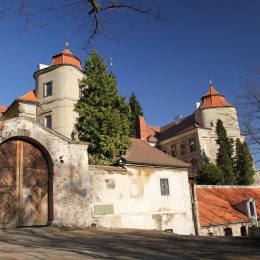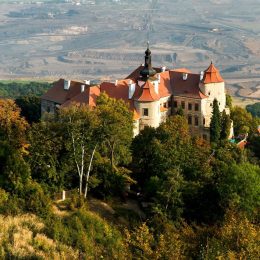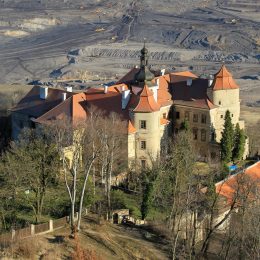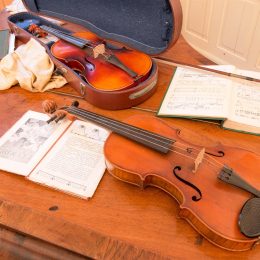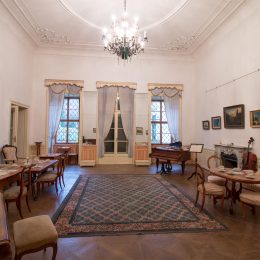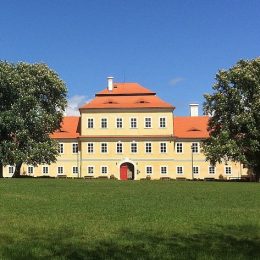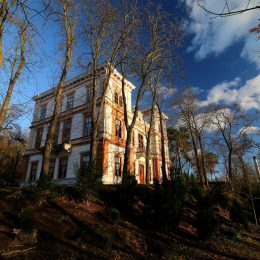A Chateau above a coal mine
The medieval Eisenberg castle, located at the foot of the Krušné Mountains, was changed in the mid-16th century into a Renaissance chateau by Nicholas Hochhauser from Hochhau. The House of Lobkowicz, who acquired the chateau in 1623, soon proceeded with Baroque alterations. In the Baroque period, the Jezeří chateau was an important cultural and social centre. In 1802, there chateau and the chateau’s symphony under the direction of Joseph Cartellieri and Antonín Vranický achieved fame. The Viennese court composer, Christoph Willibald Gluck, who is often characterized as one of the reformers of musical drama, received his music education at Jezeří. The chateau used to be visited by e.g. J. W. Goethe and other dignitaries.
After World War II, the grand residence of the Lobkowicz family deteriorated for a long time. After years of devastation, its destruction was considered in favour of coal mining. In 1987, the chateau was fortunately rescued and at the end of the 1990s its gradual reconstruction began. At present, the chateau is open to the public and mainly because of its turbulent past, is one of the most popular tourist destinations in the region. From there, you have a direct view of an active lignite quarry with giant diggers and excavators, which have stopped just at the foot of the Krušné Mountains, in front of the castle.
- Zámek Jezeří
- Zámek Jezeří
- Zámek Jezeří
- Zámek Jezeří
- Zámek Jezeří

